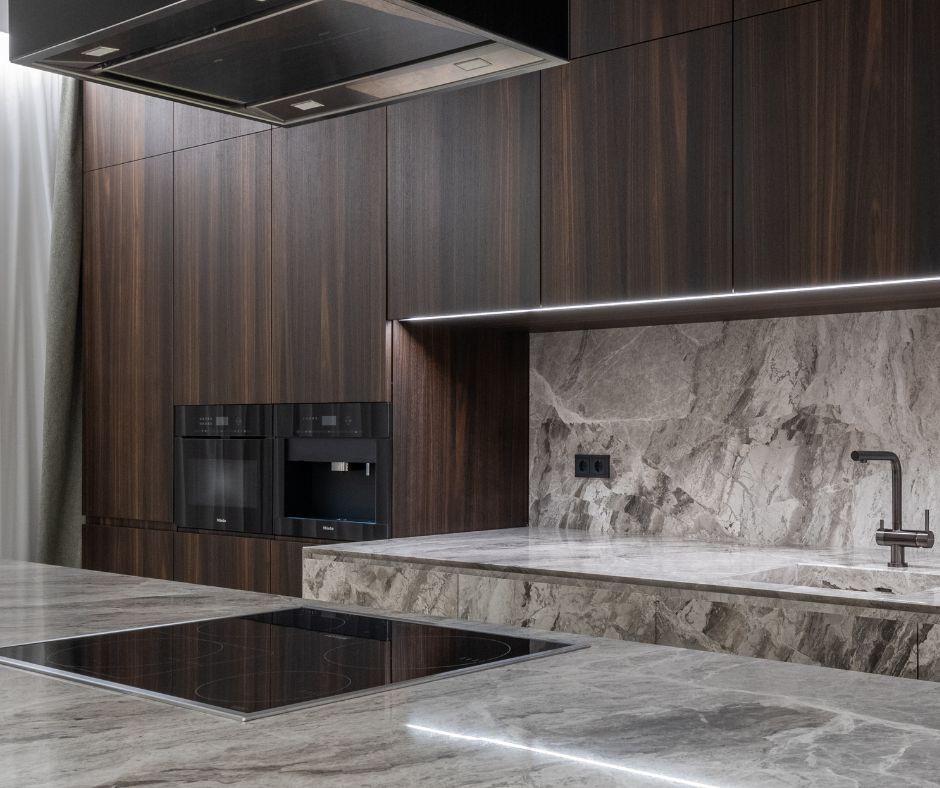Innovative kitchens are the breeding grounds for new culinary traditions. Although induction cooking technology may appear as a cutting-edge advancement, its roots extend back to the early 20th century. Enthralled audiences witnessed its early demonstrations in the 1930s, showcasing its extraordinary capability to boil water using magnetic energy without any apparent heat source. However, it is only in recent decades, bolstered by remarkable progress in technology, efficiency, and design, that induction cooktops have firmly established their presence in modern kitchens.
Today, a growing number of home chefs and culinary enthusiasts are embracing induction cooking due to its impressive blend of sleek aesthetics, exceptional precision, and unmatched energy efficiency. This cooking method not only accelerates meal preparation but is also transforming the craft of home cooking, harmonising the science of heat management with culinary creativity in every dish prepared on its stylish, polished surface. The optimal induction cooktop can rival the speed of a microwave in crafting mouth-watering family meals!
Enhancing Flavour and Nutritional Value Through Precision Cooking Techniques
In contrast to traditional gas or electric ranges, induction cooktops directly heat cookware using electromagnetic energy. This groundbreaking technique eradicates wasted heat, prevents the formation of burnt edges, and offers superior control over both low and high temperatures. When you achieve such meticulous heat management, your ingredients retain more of their natural moisture, flavour, and nutritional integrity. Whether you're flash-searing proteins, gently simmering sauces, or rapidly blanching vegetables, induction cooking facilitates effortless achievement of perfect results while avoiding overcooked meals and nutrient degradation.
Chic Induction Cooktops: Optimising Space and Easing Culinary Stress
In kitchens where every square centimetre is precious, induction cooktops shine not only in performance but also in visual appeal. Their flat, smooth surfaces seamlessly blend into your countertop, presenting a minimalist aesthetic that frees up additional space for food preparation, plating, or even enjoying casual meals.
Unlike conventional gas hobs, which are accompanied by bulky grates and protruding burners, induction cooktops sit flush against the countertop. While ceramic stovetops may provide a sleeker appearance, they often remain dangerously hot long after cooking has concluded.
In contrast, induction surfaces cool down rapidly once the cookware is removed. The heat is generated through the magnetic interaction between the cooktop and the cookware, rather than the cooktop itself, which ensures that the glass surface retains significantly less heat. This characteristic not only simplifies cleaning but also enhances safety, creating a secure cooking environment particularly advantageous for households with children or pets who might be curious about kitchen counters.
The result? A cooler kitchen with cleaner lines and greater flexibility—perfect for contemporary cooks who value both aesthetics and functionality.

Comprehensive Guide to Choosing the Ideal Cookware for Induction Cooking
Transitioning to induction cooking may come with some bittersweet revelations—you may have to part ways with some beloved old pans. Since induction technology utilises magnetic energy for heat generation, not all pots and pans are compatible with this method.
For cookware to operate effectively on an induction cooktop, it must be crafted from ferrous (magnetic) metals, such as cast iron, carbon steel, or magnetic-grade stainless steel. A straightforward fridge magnet test can confirm compatibility: simply place a magnet on the bottom of the pan. If it adheres firmly, you're good to go.
When selecting new cookware, choose pans with a heavy, flat base. This design guarantees optimal contact with the cooktop, ensuring even heat distribution which is crucial for achieving perfect browning, succulent roasts, and crispy edges. Furthermore, high-quality induction cookware is engineered to resist warping over time, providing consistent cooking performance for every meal.
Although it may be difficult to let go of old favourites, consider this transition as an upgrade. In exchange, you gain enhanced control, quicker cooking times, and dishes that deliver even richer flavours and textures.
Induction Cookware Quick Reference: Essential Items for Culinary Success
 Conduct a fridge magnet test—strong adhesion indicates compatibility with induction
Conduct a fridge magnet test—strong adhesion indicates compatibility with induction Opt for flat-bottom pans to ensure optimal contact and heat distribution
Opt for flat-bottom pans to ensure optimal contact and heat distribution Choose cast iron, carbon steel, or magnetic stainless steel cookware
Choose cast iron, carbon steel, or magnetic stainless steel cookware Avoid cookware made solely of copper, aluminium, or glass unless specifically indicated for induction
Avoid cookware made solely of copper, aluminium, or glass unless specifically indicated for induction Look for the induction symbol (resembling a horizontal coil or a series of loops) stamped on the base or packaging
Look for the induction symbol (resembling a horizontal coil or a series of loops) stamped on the base or packaging
Pro Tip: The induction symbol typically resembles a zigzag or spring coil graphic. Spotting it ensures cookware compatibility.
Essential Installation Considerations for Your Induction Cooktop
Before you begin your culinary adventure with your new cooktop, several critical installation elements must be prioritised:
-
Professional Installation Is Imperative: Induction units often necessitate dedicated electrical circuits and specific clearances. Ensure you engage professionals who understand these requirements.
-
Consult a Licensed Electrician: Wiring a high-powered induction cooktop is not a DIY undertaking.
Discover why hiring a qualified electrician is essential. -
Check Your Power Configuration: Certain induction models may consume significant power. Before making a purchase, confirm that your wiring meets the cooktop’s specifications.
Correct installation not only guarantees optimal performance but also ensures safety and longevity.
Key Insights on Induction Cooking
Induction cooking offers more than rapid cooking or safety—it is inherently intelligent. With the right cookware and a professionally installed system, you can enjoy better tasting meals, richer textures, and healthier options, meal after meal. In modern kitchens, precision cooking is not merely desired; it has become the new standard.
Frequently Asked Questions Regarding Induction Cooktops
1. What Makes Induction Cooktops Superior to Gas or Electric Models?
Induction cooktops offer immediate heat control, improved energy efficiency, and heightened safety features. As they heat the cookware directly, meals cook more swiftly with less energy waste, while the surfaces remain cooler, thus reducing the risk of burns.
2. Can I Utilise My Current Pots and Pans on an Induction Cooktop?
Only if they are magnetic. Cookware made from cast iron or magnetic stainless steel is ideal. You can easily ascertain compatibility by placing a magnet on the base—if it adheres firmly, it’s suitable for induction usage.
3. Does Induction Cooking Impact the Flavour of Food?
Yes, and positively. Because induction cooking provides precise temperature control, you can sear, sauté, or simmer without overheating, thus maintaining the natural flavours, textures, and nutrients far more effectively than with inconsistent gas or electric heat.
4. Is Special Wiring Necessary for an Induction Cooktop?
Most induction cooktops require a dedicated electrical circuit and specific voltage and amperage configurations. It is vital to have a professional electrician assess and install your wiring to ensure compliance with safety regulations and guarantee optimal performance.
The post The Secret Ingredient in Modern Kitchens: Induction Cooktops Are Changing the Game appeared first on https://cookinggods.com
The Article Induction Cooktops: The Game-Changer in Modern Kitchens Was Found On https://limitsofstrategy.com

